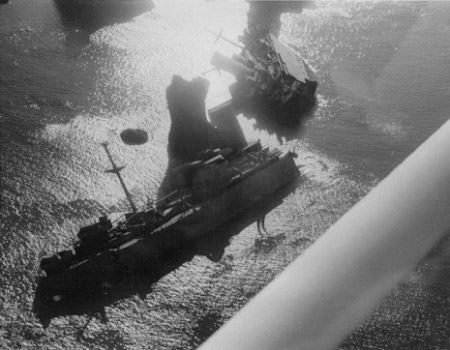Integrity of Heritage Resources
Olympic Coast

Why is it a concern?
Olympic Coast National Marine Sanctuary has a rich maritime heritage where lives, languages, communities and cultures are constantly shaped by the sea. The Makah, Quileute, Hoh and Quinault peoples traditionally lived at the water’s edge, thriving on the riches of the ocean — plants, fish, shellfish, seabirds and marine mammals. The waters of the sanctuary were highways that linked native peoples all along the coast as they traveled by canoe while mastering currents, weather and tides. The rugged Olympic Coast can also be treacherous, especially during winter storms when high winds and strong currents can push ships dangerously close to the rocky islands, reefs and shoreline — approximately 189 ships were wrecked or lost at sea in or near sanctuary waters in the years from 1808 to 1972.
There is variety in the preservation level and integrity of prehistoric and Native American sites. Nearly all of the late prehistoric sites associated with the modern shoreline are actively eroding. Data exist that document the loss of cultural deposits due to shoreline erosion, and it can be anticipated that loss of cultural deposits has also been caused by development in and around modern shoreline communities. Destruction due to vandalism has also been documented. Historic impacts include logging related activities.
Archaeological remote sensing and diver surveys in high-probability shipwreck areas from Koitlah Point, south to Destruction Island were conducted between 1995 and 2001. These nearshore surveys indicated that the dynamic coastal conditions have (except for exceptional circumstances) caused damage and destruction to historic shipwreck remains. No deep-water survey for historic shipwrecks has been conducted to date, although historically-documented shipwreck losses are known to occur in the deep waters of the sanctuary.
Overview of Research
The Olympic Coast National Marine Sanctuary is actively seeking research partners to conduct work connected to Integrity of Heritage Resources as a sentinel issue.
| Project Name | PI and contacts | Links |
|---|---|---|
Archaeological Field School and Excavation Studies |
Dr. Gary Wesson |
http://sanctuaries.noaa.gov/maritime/expeditions/3000_expedition.html |
Science Needs and Questions
The best available science is used by sanctuary scientists and managers working to address priority resource conservation and management issues. As priorities change and new issues emerge, each sanctuary develops new science needs and questions and works with partners to address them.
- Contine studies on paleo-shorelines and prehistoric human habitation.
- Coordinate with scientific and educational institutions to identify regions of probable historic shipwrecks in deeper sanctuary waters.
- Conduct surveys to discover and document historic shipwrecks.
- Expand on existing analysis of intersection between permitted activities within OCNMS and shipwreck location probability
- Complete a Maritime Heritage Resource Management Plan for OCNMS
Education and Outreach Material
National Marine Sanctuaries: Maritime Heritage
West Coast Region National Marine Sanctuaries: Maritime Heritage
References
Cantelas, Frank, et. al. (2001). Draft Report, Remote Sensing Survey 2000, Destruction Island and Vicinity, Olympic Coast National Marine Sanctuary. Prepared for NOAA Marine Sanctuary Division, Silver Spring, Maryland.
Cantelas, Frank, et. al. (2002). Draft Report, Remote Sensing Survey 2001, Olympic Coast National Marine Sanctuary. Prepared for NOAA Marine Sanctuaries Division, Silver Spring, Maryland.
Coastal Marine Archaeological Resources (CMAR) (1997a). Underwater Reconnaissance of the Troopship General M. C. Meigs AP-116. Report prepared for Olympic Coast National Marine Sanctuary.
Coastal Marine Archaeological Resources (CMAR) (1997b). Underwater Reconnaissance of the Koitlah Point Site. Report prepared for Olympic Coast National Marine Sanctuary.
Gearhart, Robert L. II, ed. (1990). California, Oregon, and Washington Archaeological Resource Study, Vol. I – IV. U.S. Department of the Interior, Minerals Management Service, Pacific OCS Region.
Terrell, Bruce G. (draft, to be published 2016). Western Olympic Peninsula Maritime Archaeological Survey; a Synthesis of Five Surveys.
Wessen, G. C. (2003). An assessment and plan for a program of studies addressing prehistoric archaeological sites associated with paleoshorelines on the Olympic Coast of Washington. Neah Bay, WA. The Makah Cultural and Research Center. 56pp.

